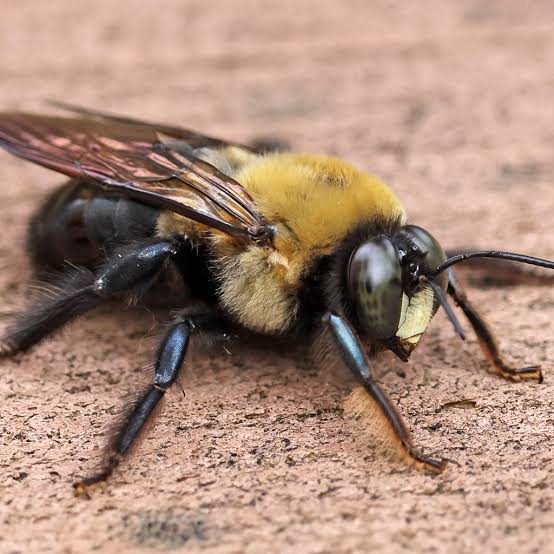Types of bees!
There are several types of bees, each playing a unique role in nature. Honey bees (Apis species) are highly social insects known for producing honey and living in large colonies; they are vital pollinators for many crops. Bumblebees (Bombus species) are also social and excellent pollinators, especially in cooler climates, recognized by their large, fuzzy bodies. Carpenter bees (Xylocopa species), in contrast, are solitary and bore into wood to create nests, which can sometimes cause structural damage. Sweat bees (family Halictidae) vary in social structure and are named for their attraction to human sweat. Leafcutter bees (Megachile species) are solitary pollinators that use pieces of leaves to construct their nests. Similarly, mason bees (Osmia species) are solitary and use mud to seal their nests, often utilizing small holes in wood or walls. Each type contributes uniquely to pollination and the broader ecosystem.

Honey Bee
A honey bee is a small, flying insect known for its role in pollination and producing honey and beeswax. Belonging to the genus Apis, the most common species is the western honey bee (Apis mellifera). Honey bees live in highly organized colonies with a queen, worker bees, and drones. They collect nectar and pollen from flowers, which they use to make honey and feed the colony. Honey bees are essential to ecosystems and agriculture due to their role in pollinating a wide variety of plants and crops.

A carpenter bee is a large, robust bee known for its habit of burrowing into wood to create nests. Unlike termites, they don't eat the wood but excavate it to lay eggs. Carpenter bees resemble bumblebees but have a shiny, hairless black abdomen. They are generally solitary, and while the females can sting if provoked, they are not aggressive. Males often hover near nests but cannot sting. These bees play a role in pollination, but their wood-boring behavior can cause structural damage if left unchecked.
Carpenter Bee


